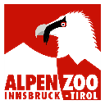Why Ethiopia?
The eastern and western highlands of Ethiopia, separated by a part of the African Great Rift Valley, comprise a diverse mixture of alpine grasslands and heathlands, deserts and rich woodlands and as a result is home to a rich small mammal assemblage of 84 species, many of which are endemic to the region. What is distinctive about this fauna is the family-level diversity, and with 12 rodent and eulipotyphlan families occurring here, it tops the list of SMSG Key Regions. In terms of numbers, it is dominated by murid rodents and shrews from the genus Crocidura, but it is also home to representatives of some unusual families that don’t occur in the other SMSG Key Regions. These include Speke's Gundi (or Speke's Pectinator Pectinator spekei) - the Gundi family is a group of small, stocky African desert-dwelling rodents - and the Lesser Egyptian Jerboa Jaculus jaculus, from the Jerboa family.
Nine globally threatened small mammal species occur in Ethiopia, of which four are Crocidura shrews. Four AZE-trigger small mammal species occur here. The Critically Endangered Harenna Shrew Crocidura harenna, Yalden's Desmomys Desmomys yaldeni, the Giant Mole Rat Tachyoryctes macrocephalus and, one of the SMSG’s Lost Species, the Critically Endangered Ethiopian Water Mouse Nilopegamys plumbeus which has not been seen since the 1920s.
Challenges
Ethiopia's highlands form a densely populated rural area, resulting in great pressure on remaining natural habitats from expanding and shifting agriculture, fires, and overgrazing.
Barley cultivation and grazing at high elevations threaten grasslands and erinaceous heathlands.
Less than 5% of the original forest cover of the Ethiopian highlands remains today and this is highly fragmented.
The Harenna forest is increasingly being utilized to supply construction material, fuel and charcoal for the expanding urban population in this region.
Finally, this region’s small mammals are extremely under-surveyed.
Solutions
Over 18% of Ethiopian land is legally protected for nature. However, while areas like the Bale Mountains National Park protect some of this region, they are used heavily by local people and their livestock. Meanwhile, controlled hunting areas and wildlife reserves offer very little, if any, protection for native flora and fauna. The proposed Termaber-Wufwasha-Ankober conservation area in the western highlands would protect much of the ecoregion's biodiversity, as would the proposed areas for protecting the forests further to the southwest.
All of Ethiopia’s globally threatened species plus five Data Deficient species need basic surveys of distribution and habitat associations.
Future Plans
Ethiopia is one of the SMSG Key Regions in which we plan to fill international knowledge gaps and develop a regional initiative to support and coordinate in-country research and conservation efforts to protect this unique assemblage of small mammals.
At present, the SMSG is working to organise knowledge-gathering and network-building workshops in two of our three highest priority Key Regions, through which we seek to forge links and recruit local members to spearhead our efforts to galvanise research and conservation focussed on each region’s small mammal species. Our work in these regions will be used to perfect our methodology for achieving similar goals in all our Key Regions. Eventually, we hope to nurture collaborative networks of local and international conservation professionals in every Key Region, which are committed to the study and protection of each region’s small mammal diversity.
While the SMSG is not currently active in Ethiopia, it is our third top priority Key Region and is therefore the next place to which we will turn our attention. For now, we will continue to monitor the state of this region’s small mammals through the international scientific literature and IUCN Red List.
If you are a professional small mammal ecologist, taxonomist or conservationist working in Ethiopia, please do Contact Us to discuss your work and how the SMSG might help.






My name is Mohammed Kasso Geda, and I am an academic staff member in the Biology Department at Dire Dawa University. I am also in the process of joining the Biology Department of Hawassa University. I am reaching out to you today as a fellow researcher and enthusiast of small mammal studies in Ethiopia. I engaged in a research project focusing on highland small mammals of Ethiopia in particular on small mammals of Chilalo-Gala Mountains Range of Arsi Mountains National Park. As I have delved deeper into this field of study, I have come to greatly appreciate your efforts and the valuable contributions you are going to made in this area. Consequently, I am highly interested in the possibility of collaborating with you on this project. Your proposed work aligns perfectly with my research interests, and I believe that our collaboration could lead to meaningful advancements in our understanding of this unique ecosystem. I am confident that our combined efforts and shared knowledge would make a significant impact on the field. Hence I would honor to be a collaborator and team member on this project, and I believe that our complementary skills and perspectives would greatly enhance our research outcomes. I am eager to discuss the project in more detail, exchange ideas, and explore potential avenues for collaboration. Your input and insights would be invaluable to the success of this endeavor.
Please feel free to contact me at your convenience to initiate further discussions. Thank you for considering this invitation, and I look forward to the possibility of collaborating with you.
My name is Tolera sori.I am working at Bale mountains National park under the administration of Ethiopian wildlife conservation Authority. I am wildlife researcher at the park and I have been searching for funds and co- researchers on Small mammals at Haranna forest(the unexplored part of our region with many mysteries) .In addition , we have been doing camera traps to search the Black maned Lion at the forest and we hope we will get the Lion pride in the coming months which will advance our conservation efforts in general. Therefore, I would like to be your in place collaborator and can prepare draft proposal for our further work on the area.
Feel free to contact me if you are interested to work with me.
Thanks in advance